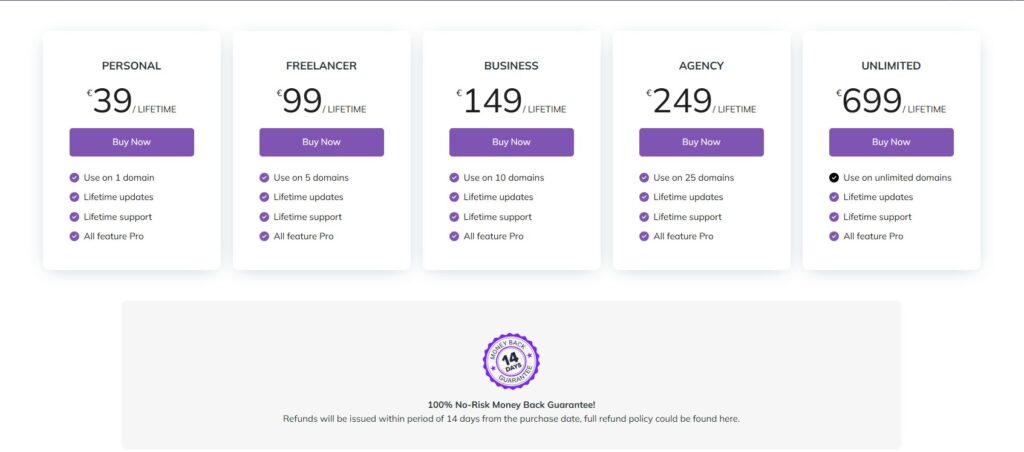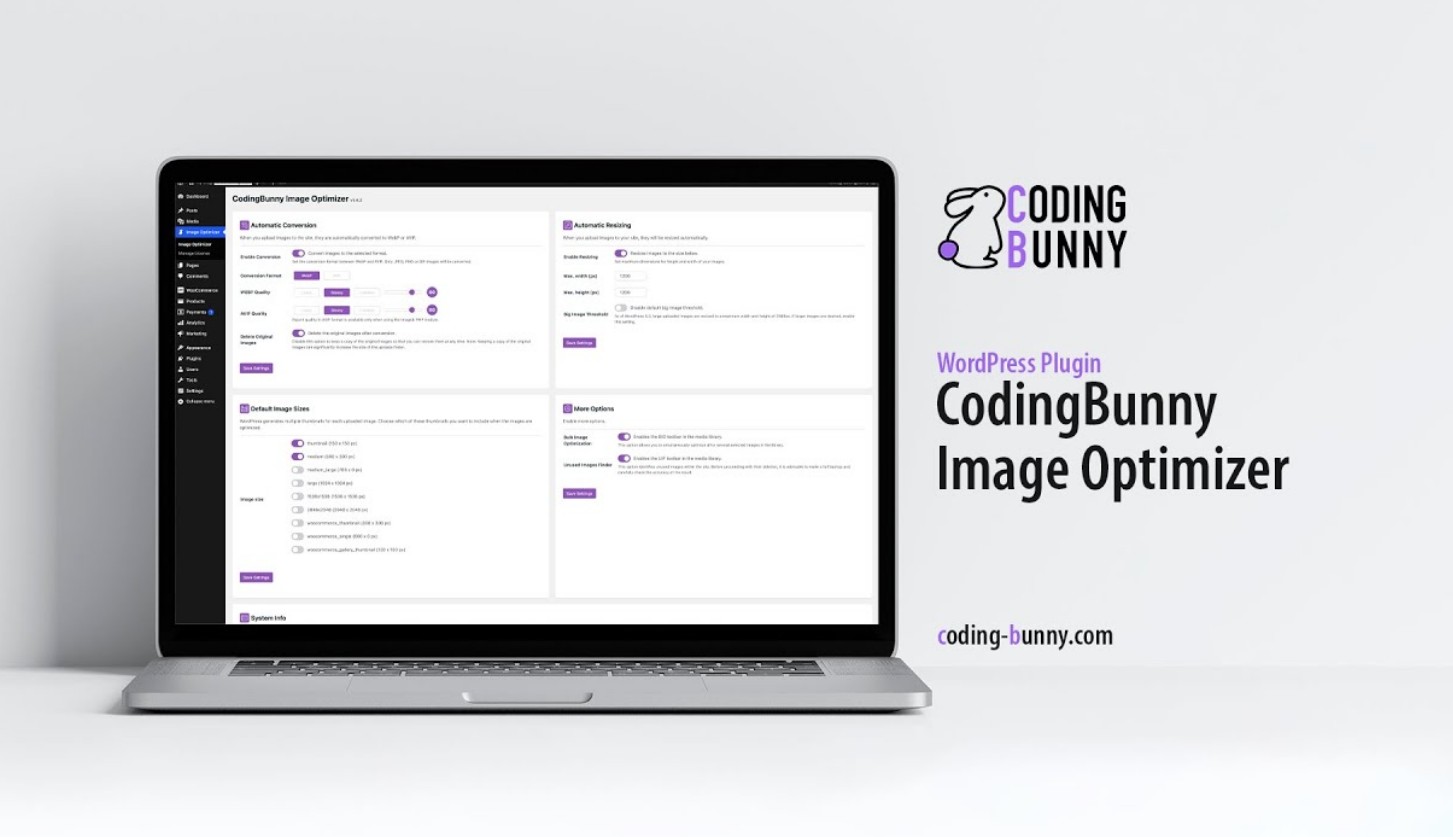Coding bunny Image Optimizer helps people improve websites by making images smaller and faster. It changes images from old types to new ones like WebP and AVIF. People use it to make sites more active, cut waiting times, and keep images looking fresh. Setting it up does not take much time. Anyone can work it easily. Big websites and small shops both find it helpful.
Coding Bunny Image Optimizer- Lifetime Deal | Fast Image Compression
Coding bunny Image Optimizer pros and Cons:
Pros:
- Absolutely fast file conversion speeds
- Very easy to set up and use
- Clean site look after image optimization
- Saves storage and cuts costs on a daily basis
- Bulk mode handles thousands of images in a timely manner
Cons:
- Has the ability to miss rare image types
Lifetime Deal Pricing:

Here is a quick look at the current deal for Coding bunny Image Optimizer:
01: Server Conversion
Server conversion lets Coding bunny Image Optimizer process images on the main computer. It can handle many files at once. This means site visitors always get small images. Uploading does not slow the site down. Quietly, it works in the background.
People do not see anything different while using the site. A great deal of space is saved on the server. Owners do not need to do things by hand. Settings can change how strong the compression is.
Large businesses like this because they send many images every day. Old files will update with new sizes. Files convert quickly. Speed stays high, even with lots of new content.
02: Browser Conversion
Browser conversion helps Coding bunny Image Optimizer change images before they reach the website viewer. Visitors see smaller files right away. Less time gets wasted reading big images.
Everyone gets fast loading. Each visitor’s browser helps do the work. No special tool is needed for this to happen. Shop owners free up resources. Old image types can turn into new ones.
Users get fresh web updates. Group work is easier online. Chat sites and large blogs benefit from this feature every day.
03: Conversion to WebP
With Coding bunny Image Optimizer, people can switch old image types like JPEG or PNG into WebP. WebP makes images lighter but keeps them clear. Websites run faster with WebP.
Less internet data goes out. Google and many browsers like WebP. Shops with lots of photos find it useful. WebP also saves storage. The quality stays high. Changing files takes little effort.
Anyone can do it in a few clicks. The process helps both small and big businesses keep up with new web rules.
04: Conversion to AVIF
Coding bunny Image Optimizer can convert images to AVIF, a fresh and smart format. AVIF files are really small and stay sharp. People want modern compression, and AVIF gives it.
This leads to less memory use. AVIF supports wide color and detail for web pages. New websites love AVIF’s high output.
Photo shops and graphic designers use this for daily jobs. The solution always updates with AVIF support. Users improve loading speeds. AVIF reduces costs for web hosts, all while keeping pictures nice.
05: Quality Conversion Settings
Quality conversion settings in Coding bunny Image Optimizer let the user pick how strong and clear photos stay. Quality controls set image sharpness for different needs.
Shops with detailed photos keep quality high. News blogs can lower quality to get speed.
Owners turn on sliders or presets. It does not take much thinking. The right setting for every use. No slowdowns from over-compression.
Photo galleries and social forums can set each image their own way. Mistakes in quality rarely happen. The system warns before making changes.
06: Remove Metadata
Image metadata holds address, history, and settings info for each photo. Coding bunny Image Optimizer can clean this space up.
Removing metadata stops private details from moving across the web. Shops can avoid privacy risk. Owners delete tags quickly. This step helps make files even smaller.
Stripping metadata cuts out waste. Any business that deals with law supports this function. Social media and blog teams also use metadata cleanup to improve site privacy.
07: Delete Original Images
Coding bunny Image Optimizer has the power to delete old files after making smaller copies. No clutter builds up. Owners do not have to clean by hand. The process is automatic.
Disk space is saved. Users can set rules for deletion. Lost files can be recovered if needed. Beginners and experts get easy controls. Businesses with heavy sites really like this. Keeping things clean makes ongoing work simple.
08: Automatic Resizing
People use automatic resizing to let Coding bunny Image Optimizer fit pictures to the exact size needed. Images work for mobile, desktop, and tablet screens.
Shops can raise sales because pics always fit. No blurry or stretched photos. Owners set needed limits or use presets. The system resizes images just right. Mistakes do not happen often.
The process helps keep every visitor happy and the site looking fresh.
09: Bulk Image Optimization
Bulk optimization means Coding bunny Image Optimizer can handle very large numbers of files at once. Many owners have folders with hundreds or thousands of images.
Doing each alone takes too long. With bulk mode, everything gets smaller in a short time. People use a single action to compress all the files. The site gets faster overnight.
Big shops or media outlets like this the most. Daily uploads and updates never slow down the optimization process.
10: Alt Text Generator
The alt text generator adds helpful words to each image for readers and search engines. Coding bunny Image Optimizer builds alt tags from photos.
This helps robots and people understand photo meaning. Every shop can add good SEO. Sites for people who cannot see get big help. Alt tags give Google extra info.
Business blogs improve search scores. The generator works in background. No extra steps needed. Owners save time and improve website reach.
11: Lazy Loading
Lazy loading lets Coding bunny Image Optimizer show first images quickly, then wait for others. This means visitors see things sooner.
Slow internet does not block the main site. Owners can set how many images load at first. Lazy loading helps busy pages not freeze up.
Shop and news sites use lazy loading day to day. It makes pages more fun and light. Less delay for every new visitor. Owners get smoother operation.
12: Preload Critical Image
Preloading works by having the most important images load first. Coding bunny Image Optimizer does this for headers, logos, or key sales photos.
People see what matters the most. No wasted seconds. Sites with big banners benefit. Owners choose critical files. Everything else loads later. The feature works for small businesses or big brands.
Sites feel more welcoming. Visitors get to see top content without waiting.
Read More: Nexter Lifetime Deal | WordPress Builder’s Power Pack
Coding bunny Image Optimizer works for shops, bloggers, and brands. Fast easy setup means quick results for any type of site. Image speed, quality, and storage are never a problem. Owners save time, improve visitor numbers, and keep up with Google rules. At the end of the day, this deal stays strong for anyone who needs simple, strong image optimization for less. If you ask me, Coding bunny Image Optimizer is worth checking out.
